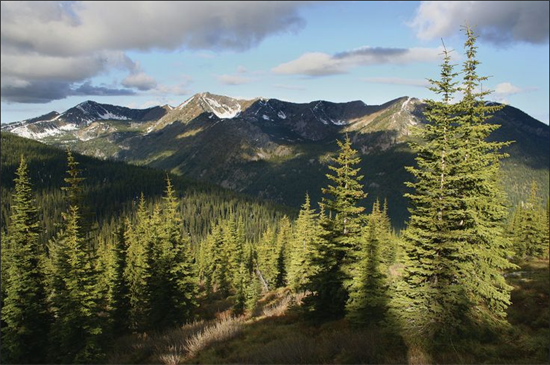Newhouse, Kilmer Lead Inquiry Into Low Forest Service Timber Harvests“unnaturally dense timber stands are vulnerable to insects, disease, and fire”
Washington,
February 1, 2023
|
Amanda Fitzmorris
(202-317-0098)
WASHINGTON, D.C. – Chairman Dan Newhouse (WA-04) and Rep. Derek Kilmer (WA-06) led a bipartisan letter to U.S. Forest Service Chief Randy Moore requesting information on the Forest Service’s low timber harvest in FY22 which was down 11% from FY19—the last pre-pandemic year of timber harvests. The West continues to face the risk of catastrophic wildfire because federal forests have been poorly managed for decades and are now overgrown with unnaturally dense timber stands that are vulnerable to insects, disease, and fire. “Our federal forests are overstocked with trees, which increases wildfire risk and stress on the trees – making them more susceptible to insects and disease – so it is imperative the Forest Service work alongside Congress to actively manage our forests, remove overgrowth, and ensure sawmills and other forest sector infrastructure remain open,” wrote the lawmakers. “The Forest Service has indicated that it needs to increase current treatment levels by two to four times to get ahead of a growing forest health and wildfire crisis,” they continued. “Congress has provided the Forest Service with an influx of new funding and created statutory authorities to help address the backlog of forest management work that has contributed to the declining health of our forests and the subsequent catastrophic wildfires. We remain focused on the need to expedite work to address the wildfire crisis across the West.” They concluded, “We look forward to hearing how the Forest Service will prioritize increasing active forest management for a healthier forest ecosystem and a corresponding increase in sustainable timber outputs.” Joining Reps. Newhouse and Kilmer on the letter were Reps. Thompson, Schrier, McClintock, Moylan, Chavez-DeRemer, Boebert, Stewart, Owens, Rosendale, Stauber, Obernolte, Johnson (SD), Zinke, Bentz, Fulcher, LaMalfa, Guest, Gluesenkamp Perez, and Costa. Full text of the letter can be found here and below: Dear Chief Moore, We write regarding the Timber Sale Program report for Fiscal Year 2022 and with questions about the target planning for Fiscal Year 2023. We believe that a strong Timber Sale Program has the dual benefit of ensuring our National Forests meet the multiple-use mandate embodied by the National Forest Management Act and other laws and by creating jobs in rural communities while protecting our public lands by thinning overgrown tree stands to improve wider environmental forest health, decreasing the risk of catastrophic wildfire, and providing responsibly harvested wood products. According to the FY22 report, the Forest Service sold over 2.9 billion board feet of timber. While this is an increase of three percent over the amount sold in FY21, it is 11 percent lower than FY19 – the last pre-pandemic year of timber harvests. This is concerning because in the past three years alone, five sawmills have closed near National Forest System (NFS) lands, and with reductions in harvest outputs continuing in some regions, additional sawmills and forestry contractors are at risk of closure over the next 6 to 18 months. While there was a major increase in timber outputs in Region 5, largely due to salvage sales following two disastrous fire seasons (2020 and 2021), we are concerned to see the other major timber producing regions (Regions 2, 6, and 8) experience a combined drop of 176 million board feet with timber outputs in Region 6 falling more than 33 percent since 2019. This is the lowest level of timber sales in Region 6 in nearly two decades. We have heard from the Forest Service that one of the challenges to the Timber Sale Program is dealing with “low value material.” Unfortunately, permanently losing sawmills creates even more “low value material,” as the distance to transport the logs to remaining sawmills becomes cost prohibitive. Our federal forests are overstocked with trees, which increases wildfire risk and stress on the trees – making them more susceptible to insects and disease – so it is imperative the Forest Service work alongside Congress to actively manage our forests, remove overgrowth, and ensure sawmills and other forest sector infrastructure remain open. The Forest Service has indicated that it needs to increase current treatment levels by two to four times to get ahead of a growing forest health and wildfire crisis. Congress has provided the Forest Service with an influx of new funding and created statutory authorities to help address the backlog of forest management work that has contributed to the declining health of our forests and the subsequent catastrophic wildfires. We remain focused on the need to expedite work to address the wildfire crisis across the West. To that end, please provide answers to the following questions by February 20, 2023:
We look forward to hearing how the Forest Service will prioritize increasing active forest management for a healthier forest ecosystem and a corresponding increase in sustainable timber outputs. |
Stay Connected
Use the following link to sign up for our newsletter and get the latest news and updates directly to your inbox.


